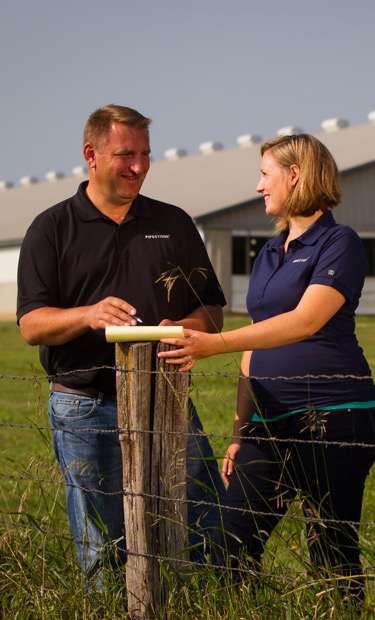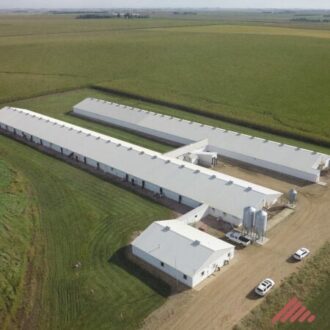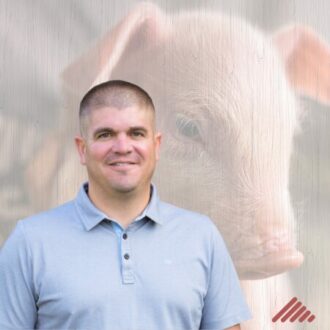Ordering feed for your pigs is an essential responsibility on the farm. It may seem straightforward, but it plays a critical role in both the performance of your animals and their overall health. Incorrect feed orders can not only disrupt feeding schedules but also pose serious biosecurity risks. Here are a few tips and tricks to consider before placing your next feed order:
- Proper Inventory Management
Reading bins is a tedious task, but crucial to planning an appropriate feed order. Proper bin readings reduce the chance of running out of feed, improve feed quality by ensuring the oldest feed is used first, and eliminate feed delivery errors. Reading feed bins and managing your inventory is essential for proper feed ordering. - Logistics and Delivery
Establish a delivery schedule with your feed mill to maintain biosecurity standards. It will set you up for a regular schedule to read your bin, and provide your mill the opportunity to follow the biosecurity pyramid. Below is an example of a health biosecurity pyramid. The goal is to maintain a delivery schedule that allows high health sites, and sow farms, to receive feed either at the beginning of the week or delivered by dedicated trucks. Level 2, healthy grow-finish sites, should be after sow farms and before any diseased challenged sites to maintain health status. Level 3 and Level 4 are shown as either recovering from a previous disease issue or currently experiencing a health challenge. This structured approach helps in maintaining the health status of your herd.
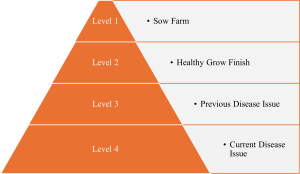
- Record Keeping – Understanding Daily Consumption
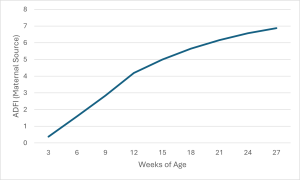 Understanding daily consumption trends involves carefully monitoring and analyzing the feed intake patterns over time. By consistently tracking daily feed consumption, either manually or with automated systems, farmers can gather data that reveals important trends. These trends may vary according to different stages of production. For example, during lactation, sows typically have a higher feed intake to support milk production, while during gestation, their intake might be more regulated to prevent excessive weight gain. The ability to understand consumption trends provides insight into how much feed is needed on a weekly basis, and leads to improved feed ordering. Below is an example of an average daily intake chart for maternal gilt source. This information can be used to quickly calculate complete feed needs.
Understanding daily consumption trends involves carefully monitoring and analyzing the feed intake patterns over time. By consistently tracking daily feed consumption, either manually or with automated systems, farmers can gather data that reveals important trends. These trends may vary according to different stages of production. For example, during lactation, sows typically have a higher feed intake to support milk production, while during gestation, their intake might be more regulated to prevent excessive weight gain. The ability to understand consumption trends provides insight into how much feed is needed on a weekly basis, and leads to improved feed ordering. Below is an example of an average daily intake chart for maternal gilt source. This information can be used to quickly calculate complete feed needs. - Advanced Feed Monitoring Technologies
There are currently many products in the marketplace to assist in the feed ordering process. These allow you to have bin inventory status at your fingertips versus climbing bins, and different versions of these products can also calculate daily consumption. Streamlining these functions creates efficiency for pig caretakers and can be used as a predictive tool for feed ordering.
Placing feed orders with a concentration on pig health, biosecurity, feed quality, and understanding daily consumption can lead to improved pig performance. Advancements in technology can aid decision-making on how to manage feed effectively.
